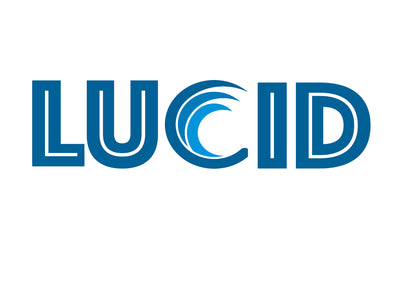
Stand-up paddle boarding (SUP) is a relaxing activity that, with the exception of more extreme versions on whitewater rivers or heavy-duty surf breaks, is about as laid-back as water sports get. Some paddle boarders are thus lulled into a false sense of security, forgetting that there is an inherent danger whenever you're out and about on the water—any kind of water deep enough to SUP on.
Fortunately, safety-conscious paddle boarders can do a lot to reduce risk while increasing enjoyment. The personal flotation device, or PFD, is, of course, the most important piece of SUP safety equipment. Even if you don't think you're in particularly dangerous waters, you should always wear a PFD when paddle boarding. I keep mine in the same bag as my electric SUP pump, which I can't go out on the water without.
After all, drowning is the world's third-leading cause of accidental death, with an average of ten drowning deaths occurring in the United States every day. According to the US Coast Guard, nine out of every ten drownings in the country occur in inland waters rather than the rough open ocean. Most drowning victims are not wearing personal floatation devices (PFDs), which can legitimately mean the difference between life and death.
In this article, we'll go over the basics of choosing a PFD for stand-up paddle boarding, as well as highlight some of the best PFD models on the market right now. And if you're put off by memories of bulky, constrictive, stinky life jackets, don't worry: modern PFDs are a far cry from those revolting garments!
PFD Types When it comes to life jackets, it's important to remember that while all life jackets are PFDs, not all PFDs are life jackets. A life jacket allows a person to breathe even if they are incapacitated or unconscious by turning them face-up in the water. Although all PFDs are intended to provide extra lift in the water, not all are designed to do so.
APPLY FOR A DISCOUNT
The United States Coast Guard, which regulates PFDs in the United States, classifies these flotation aids into five categories. These categories denote different designs and, to a lesser extent, different buoyancy ratings—aka flotation, which describes the force (measured in pounds) required to keep a PFD wearer's head and chin above the water. It doesn't take much for adults to do so, as they only need seven to twelve pounds of buoyancy to keep their heads above the waterline. Buoyancy is determined by a variety of factors, and different PFD design styles (which we'll discuss after going through the PFD classes) provide varying levels of flotation.
PFD classes as defined by the US Coast Guard:
Type I PFDs: These are known as "Offshore Life Jackets" by the Coast Guard and provide the most robust protection for someone who falls into the water. With a minimum buoyancy of 22 pounds—inflatable Type I PFDs provide 33 pounds of flotation and are the preferred PFD for anyone venturing into rough, remote waters, including the open ocean, where rescue may be a lengthy process. Because they turn the wearer face-up in the water, Type I PFDs qualify as life jackets.
Type II PFDs have a minimum buoyancy of 15.5 pounds, while inflatable models have the same minimum buoyancy as Type I counterparts: 33 pounds. Type II PFDs are designed for boating and water sports in calmer waters and inland settings where rescue is likely to arrive quickly. Some Type II PFDs, but not all, are life jackets.
Type III PFDs: Known as "Flotation Aids" by the Coast Guard, Type III PFDs are the most popular among paddlers in normal calm, accessible waters. They can be designed and labeled for specific activities, such as paddlesports, and have a minimum buoyancy of 15.5 pounds.
Type IV PFDs are ring buoys, cushions, and other rescue flotation devices that are thrown to people struggling in the water rather than worn.
Type V PFDs: These "Special Use Devices" include deck suits, commercial whitewater vests, and hybrid inflatable PFDs, among other things. They provide 15.5 pounds of buoyancy.
A typical stand-up paddle boarder will select a Type II or Type III PFD. One consideration is buoyancy; another is comfort and wearability. Although Type II PFDs provide significantly more comfort and ease of movement than Offshore Life Jackets, they are bulkier than Type IIIs, so paddlers in calm waters with quick rescue often prefer the latter.
But first, we must distinguish between inherently buoyant PFDs and inflatable PFDs. The most common are inherently buoyant models, also known as "standard PFDs." They're made of foam or another "floaty" material and thus don't require any special deployment to give you lift in the water. Inflatable PFDs fill with air when yanked on a cord or when submerged. Inflatable PFDs are unobtrusive to wear, don't obstruct your paddling motion, and are significantly cooler than their inherently buoyant counterparts, which cover a larger portion of your body at all times. As a result, an inflatable Type II PFD is less bulky and restrictive than a traditional one.
Inflatable PFDs require more maintenance than standard ones because their CO2 cartridges must be replaced. They also lack the pockets that naturally buoyant PFDs have, which are obviously useful for storing items.
(There are also "hybrid" PFDs on the market that combine elements of inherently buoyant and inflatable PFDs.) These are typically expensive.)
Inflatable PFDs, as well as lighter Type III PFDs in general, are appealing for stand-up paddle boarding, because you're moving more than in seated water sports; range-of-motion is essential. However, if you go the inflatable route, you should usually go with a manual model; automatically inflating PFDs aren't usually conducive to paddle boarding, which requires frequent dunks. However, in the following section, we'll look at an automatic inflator that could be ideal for calm waters and/or experienced paddle boarders who don't usually fall off.
The 7 Best SUP PFDs
The seven PFDs listed below are all excellent choices for stand-up paddle boarding. (By the way, we're not presenting these in any particular order.)
(1) Dynamic Paddle Sports Life Vest Onyx MoveVent
Thanks to ample mesh, a lightweight, body-conforming foam core, and adjustable shoulder straps cushioned with neoprene comfort pads, this Coast Guard-certified Type III PFD by Onyx Outdoor provides a highly breathable, comfy-yet-snug fit. There are zippered pockets with mesh drainage for storing items, as well as a lash tab for attaching accessories; the life vest comes with a safety whistle attached. In addition, the SOLAS-grade reflectivity improves your visibility on the water.
(2) Unisex DRIFT Belt Pack Inflatable Life Jackets
Here's a solid option for a manual inflatable PFD that provides a great range of motion on the paddle board. When the secondary oral inflator is filled, this DRIFT belt pack provides not only 16.5 pounds of buoyancy with its pull-tab CO2-inflated chamber, but also a solid 29.5 pounds of flotation. The DRIFT Unisex Belt Pack Inflatable Life Jacket is made of neoprene and has D-rings for accessory attachments. It fits waists ranging from 24 to 52 inches.
(3) NRS Ninja Kayak Lifejacket
Because of its low profile, the NRS Ninja Kayak Lifejacket is ideal for stand-up paddle boarding. With no fewer than six adjustment points and 16.5 pounds of buoyancy, this Type III vest gives you precise control over fit. The floating front panel increases mobility, while the AirMesh shoulder straps and inner panels provide excellent ventilation. The compartmentalized and zippered front clamshell pocket, which can even hold your favorite cold beverage, may be the icing on the cake!
(4) Mustang Survival HIT Inflatable PFDs with Harnesses
This is a self-inflating PFD that works well with stand-up paddle boarding, especially for experienced paddlers on calm waters. This PFD is a Type II-rated aid that is primarily marketed to sailors. It uses Hydrostatic Inflator Technology (HIT) to inflate only when submerged and exposed to four inches or more of water pressure, and it provides an impressive 38 pounds of buoyancy. This is an easy-wearing piece of insurance for your on-the-water adventures, from the neoprene "Comfort Collar" to the safety whistle and SOLAS reflective tape.
(5) Manual Inflatable Life Jackets Onyx Belt Pack
The Onyx Belt Pack Manual Inflatable Life Jacket is another inflatable PFD that provides superior comfort and range of motion. It is rated Type V but delivers Type III buoyancy: The CO2 cartridge alone provides 17 pounds of flotation, but with the additional lift provided by the oral inflation tube, the flotation increases to 26.5 pounds. This PFD, made of 200-denier nylon and featuring convenient D-ring attachments, fits chest sizes 30 to 52 inches and waist sizes up to 52 inches.
(6) NRS Chinook Fishing Kayak Lifejackets
The NRS Chinook Fishing Kayak Lifejacket is an excellent choice if you use your paddle board for casting. With PlushFIT foam and numerous adjustment points to ensure a perfect fit, this 400-denier ripstop nylon PFD vest includes not only a pair of large zippered pockets and accessory pockets, but also a special tool-holder pocket for wrangling your tackle.
PFDs work well for women, and there is something to be said for vests designed specifically for female bodies. That's what the Stolquist Betsea Womens Kayak Life Jacket promises, with supportive inner cups and a WRAPTURE torso designed specifically for female paddlers. The cross-chest cinch harness only adds to the secure fit by keeping the flotation elements lower on the vest and reducing ride-up.
Tips for Paddle Board PFD Safety
There are several factors to consider when selecting a PFD that will provide adequate protection while stand-up paddle boarding. First and foremost, look for US Coast Guard certification to ensure you have a high-quality product that meets the standards.
It's also critical that your PFD fits properly; otherwise, it's useless. When selecting a PFD, try it on with the outfit you'll be wearing while paddling; clothing affects your buoyancy and the lift provided by your PFD. For adult paddlers, chest size is the most important factor in PFD fitting. Weight is more important for children.
It is always a good idea to test a PFD in shallow water. Allowing your body to float and tilting your head back tests the effective buoyancy of the PFD: Keep your chin above the water and you're breathing free and easy. If the water is getting too close to your mouth for comfort, try a more buoyant model or something completely different.
Another way to test fit in or out of the water is to have a friend lift up on the PFD's shoulders while you're wearing it. Tighten the PFD and try again if it slides up over your face. If it continues to rise too far, you must downsize.
Allow your PFD to dry thoroughly before storing it, and store it in a dry, well-ventilated area away from direct sunlight.
On the subject of safety, let us briefly mention a couple of other critical elements. Some of the PFDs we highlighted come with their own safety whistles, but if they don't, you should definitely attach one to yours. Don't overlook this handy tool, which allows you to broadcast your location as well as your state of distress if things go wrong.
Consider an ankle-attaching paddle board leash to keep you connected to your board. Aside from allowing you to keep hold of your investment, that leash serves as a potential lifeline if you become injured or fatigued in the water and require that floating platform to haul out on.


